Mixed Circuits
A mixed circuit is one in which element flows through a unique path in some areas and through parallel paths in some other areas. Notice on the combination circuit below current flowing through resistor 2 is flowing through a single path, and current flowing through resistor A and B is flowing in parallel.
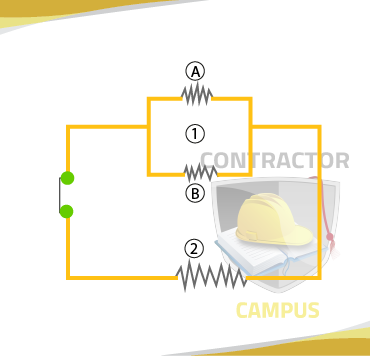
To perform calculations on mixed circuits, it is best to think of the circuit or the confirmation of several circuits, some series, and some parallel.
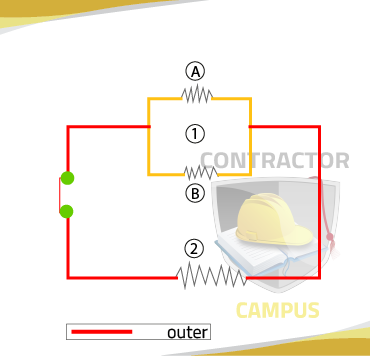
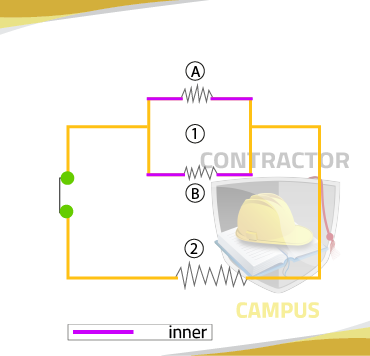
In this particular example, we can think as the outer circuit or as being a series circuit with an "imaginary" resistance 1.
The Voltage, resistance, and current for this "imaginary"? resistance 1 must be obtained from the totals of resistors A and B. We can think of the confirmation of A and B or being the inner circuit. Since A and B are clearly in parallel, parallel rules and formulas must be observed when calculating totals for 1.
Example: Find the total resistance flowing through A and B, the total resistance flowing through C and D, the voltages at A and D, the total resistance for the entire circuit, and the voltage at resistor 1.
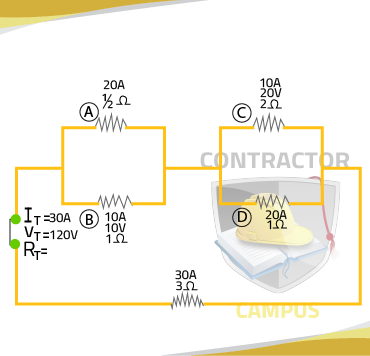
If you get a problem like this your first step is to "imagine" two resistors which would complete the outer series circuit, of which resistor 1 is part. Calling these imaginary resistors AB and CD in this particular case can be helpful.
Your second step is to label all circuit elements. See image below
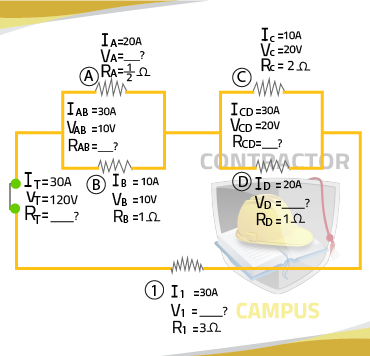
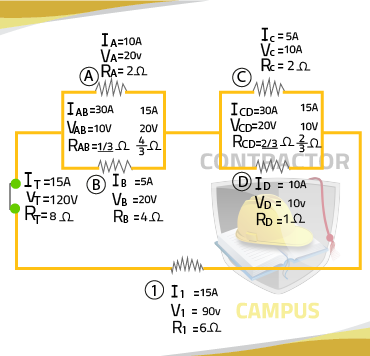
This will allow you to keep track of the information you have, what you are missing and which formulas you can use
- RAB
Since A and B are parallel, let's use the following formula.
1/RAB = 1/RA + 1/RB
1/RAB = 1/2 + 1/4
Common denominator is 4.
1/RAB => 1 x 2 / 2 x 2 = 2/4
1/RAB = 2/4 + 1/4 = 3/4
1/RAB = 3 ÷ 3 / 4 ÷ 3 = 1/ 4/3
1/RAB = 1/ 4/3 ; RAB = 4/3 Ω
- RCD
1/RCD = 1/RC + 1/RD
1/RCD = 1/2 + 1/1
Common denominator is 2.
1/RD => 1 x 2 / 1 x 2 = 2/2
1/RCD = 1/2 + 1/2 = 2/2
1/RCD = 3 ÷ 3 / 2 ÷ 3 = 1/ 2/3
RCD = 2/3 Ω
- VA
Since voltage is the same everywhere in a parallel circuit, VA must be the same as VB, therefore VA is 20V.
- RT
Since the "outer" circuit is a series circuit, we use the following formula.
RT = 6 Ω + 2/3 Ω + 4/3 Ω
RT = 6 Ω + 6/3 Ω
RT = 6 Ω + 2 Ω
RT = 8 Ω
- VD
Since Voltage is the same everywhere in a parallel circuit, VD must be the same as VC, therefore VD is 10V.
- VI
Since VI is part of the "outer" following formula:
120V = VI + 20V + 10V
120V - 20V - 10V +VI
90V = VI

